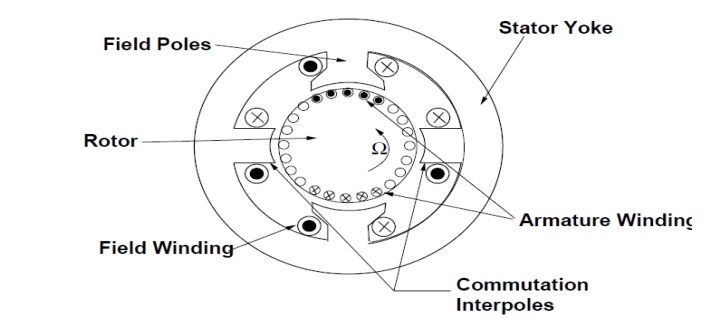Chapter: Electrical machines : DC Generators
Commutation and Interpoles
Commutation
And Interpoles
In larger
machines the commutation process would involve too much sparking, which causes
brush wear, noxious gases (ozone) that promote corrosion, etc. In these cases
it is common to use separate commutation interpoles. These are separate,
usually narrow or seemingly vestigal pole pieces which carry armature current.
They are arranged in such a way that the flux from the interpole drives current
in the commutated coil in the proper direction

Remember
that the coil being commutated is located physically between the active poles
and the interpole is therefore in the right spot to influence commutation. The
interpole is wound with armature current (it is in series with the main
brushes). It is easy to see that the interpole must have a flux density
proportional to the current to be commutated. Since the speed with which the
coil must be commutated is proportional to rotational velocity and so is the
voltage induced by the interpole, if the right numbers of turns are put around
the interpole, commutation can be made to be quite accurate.
Related Topics